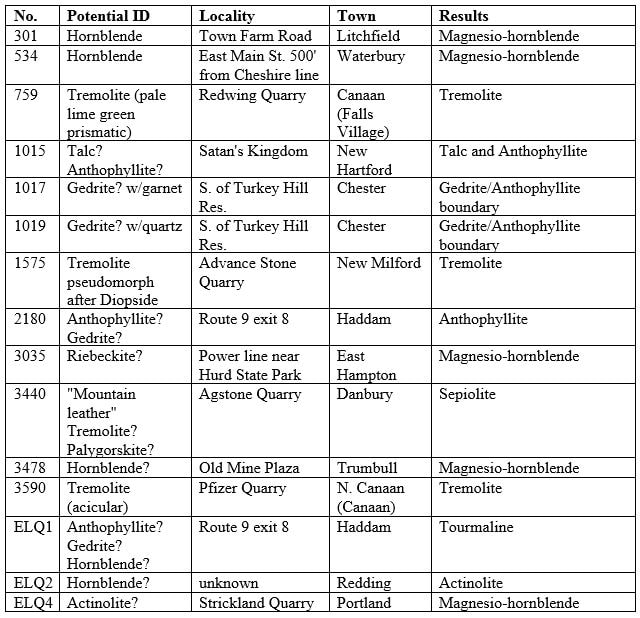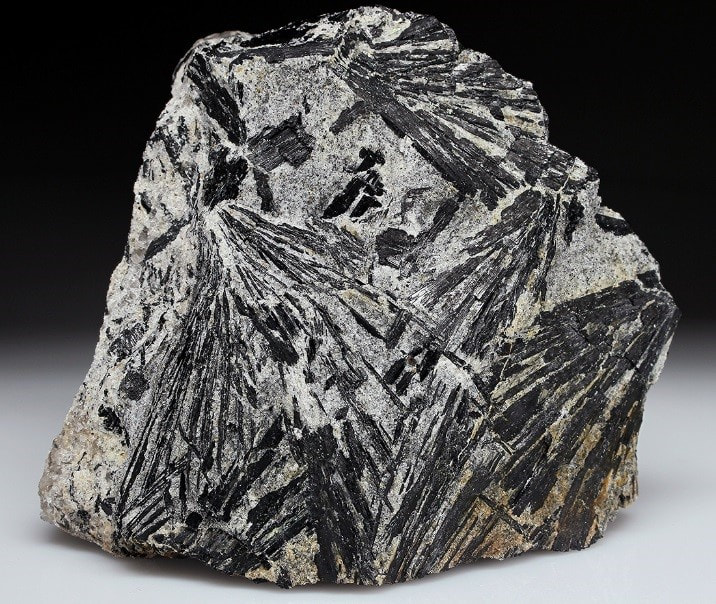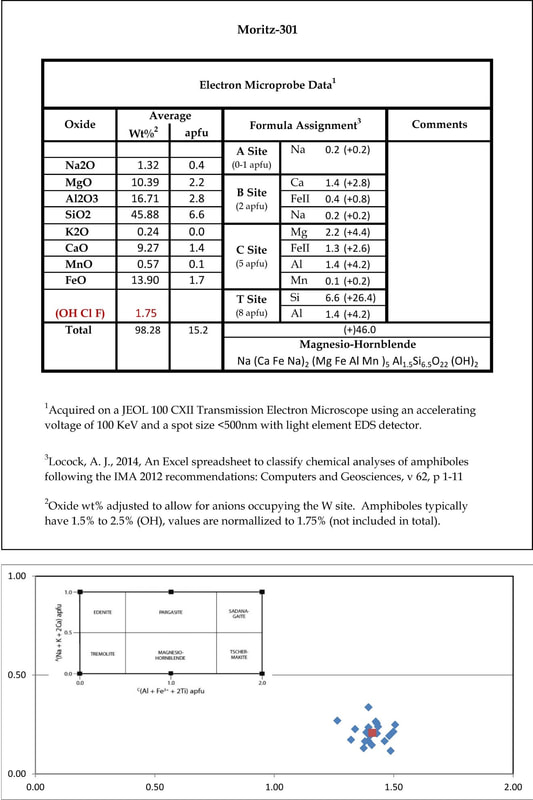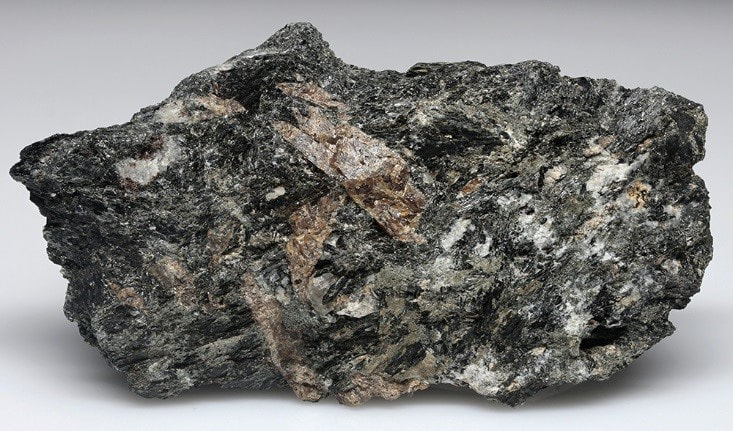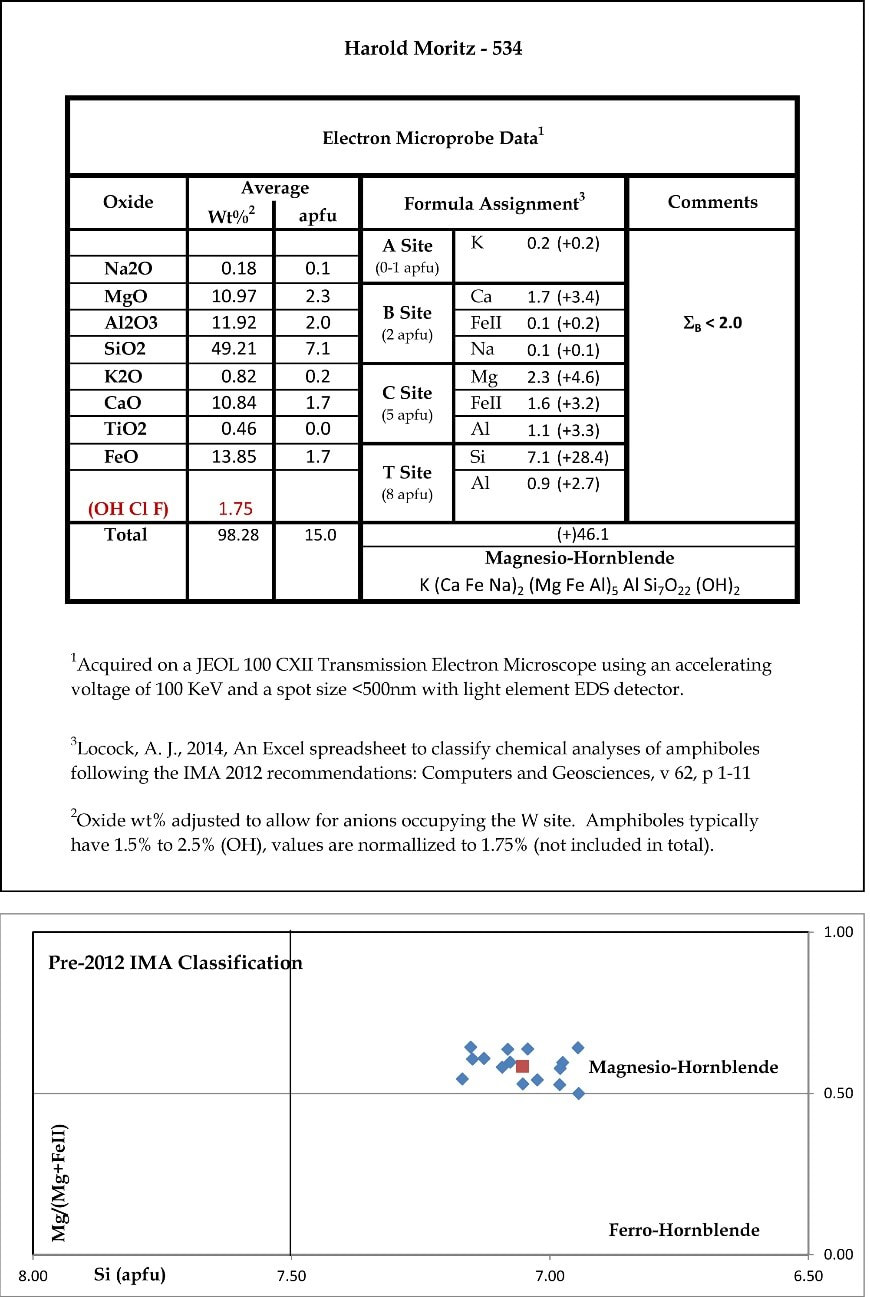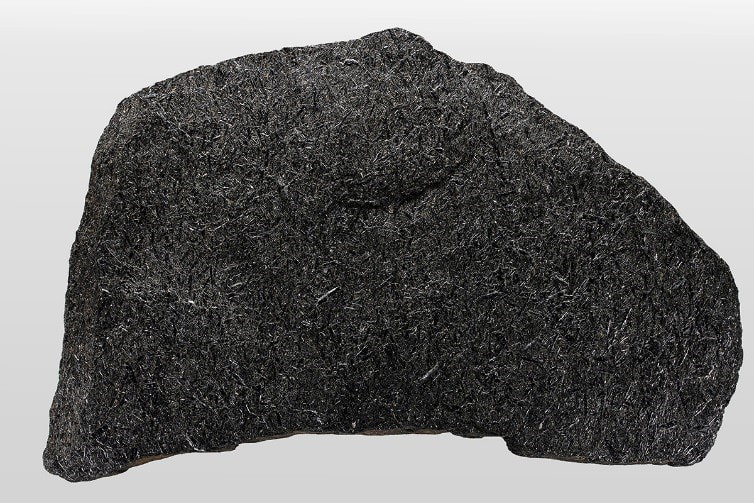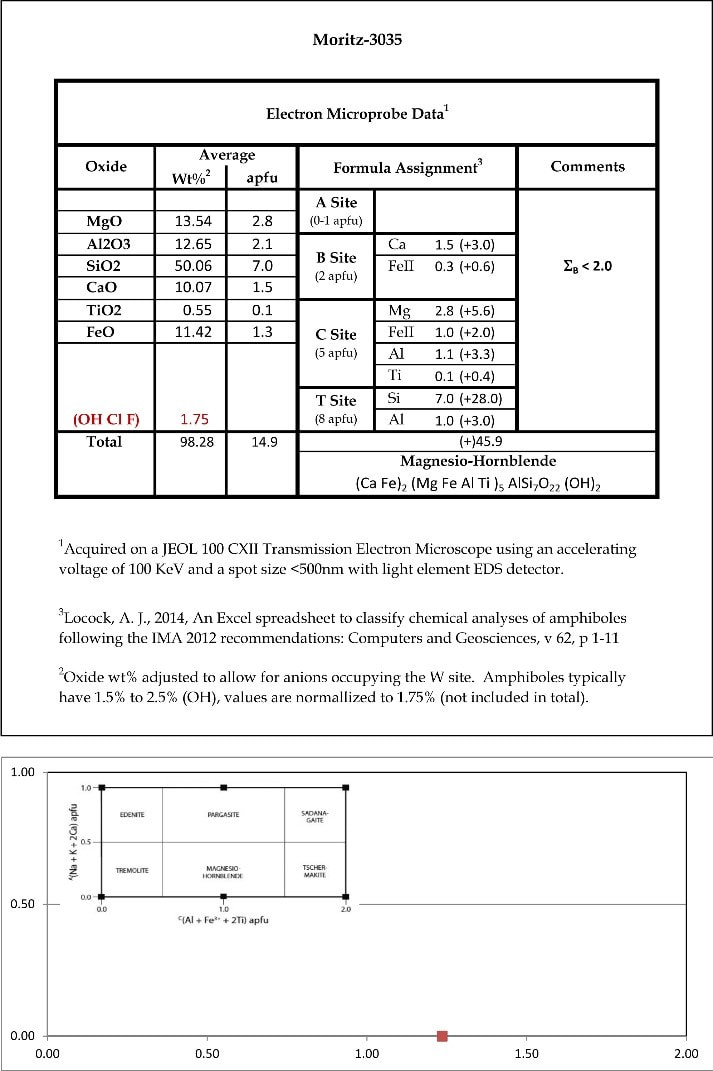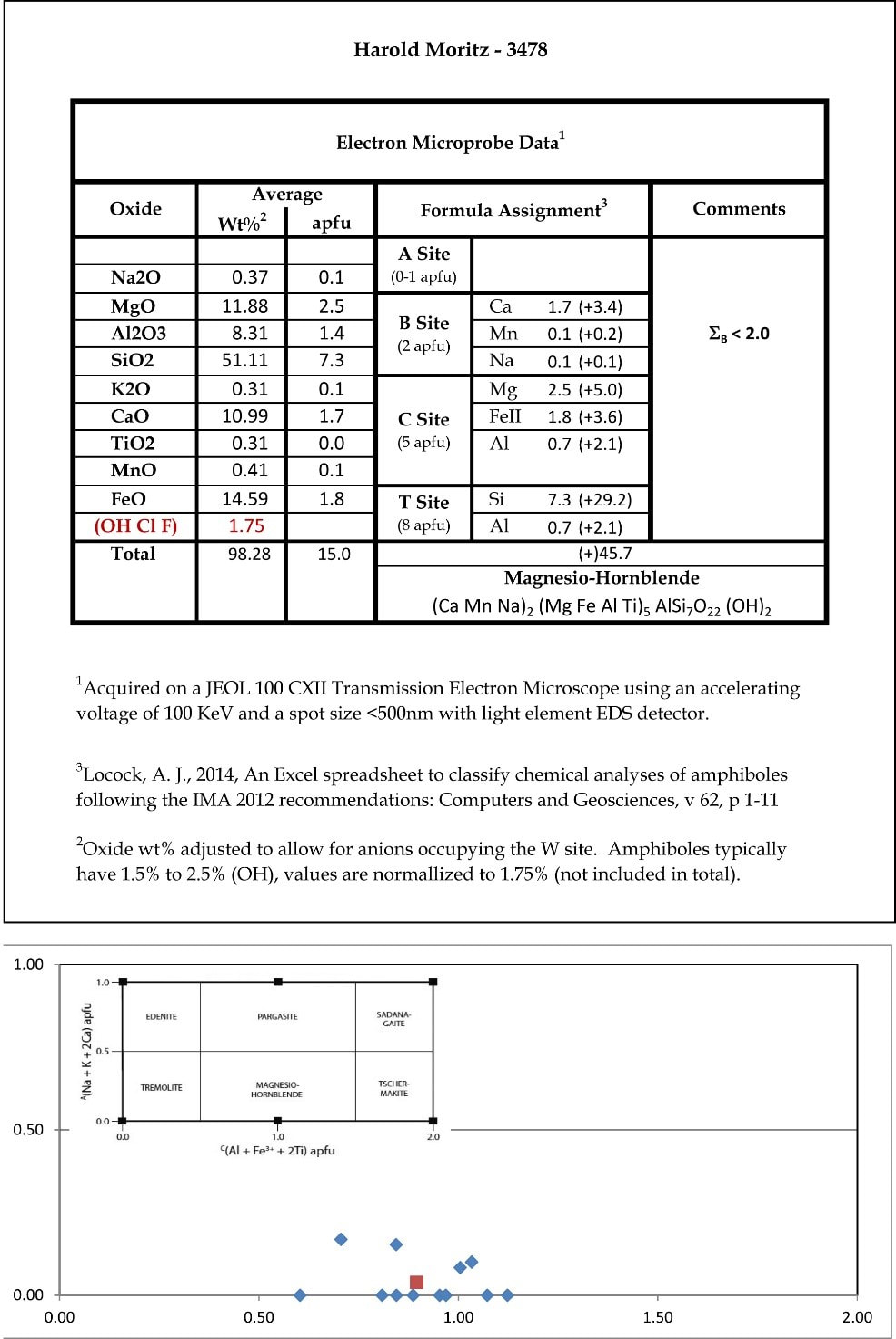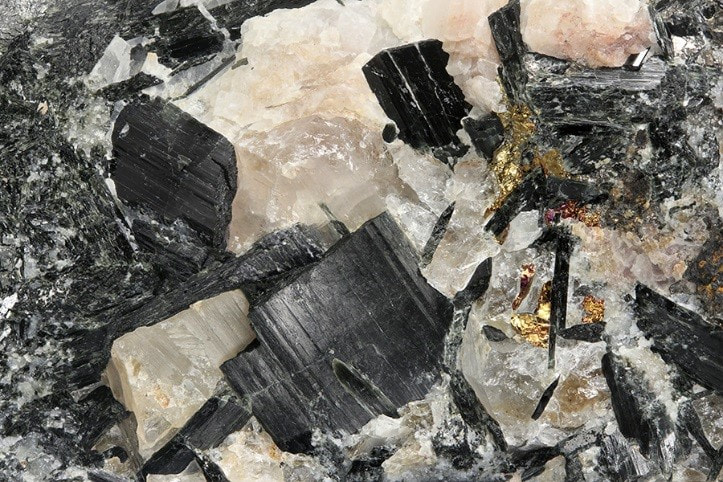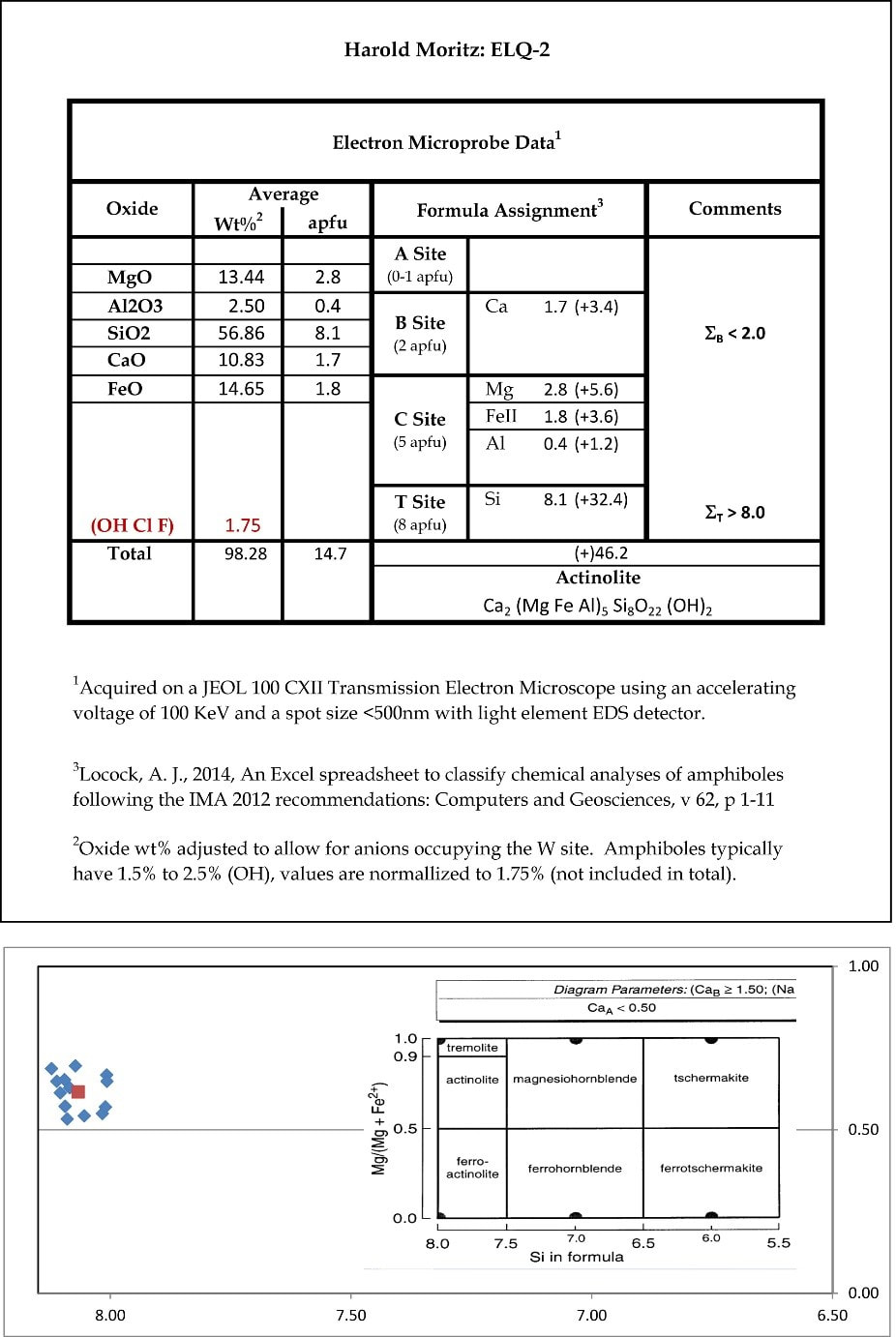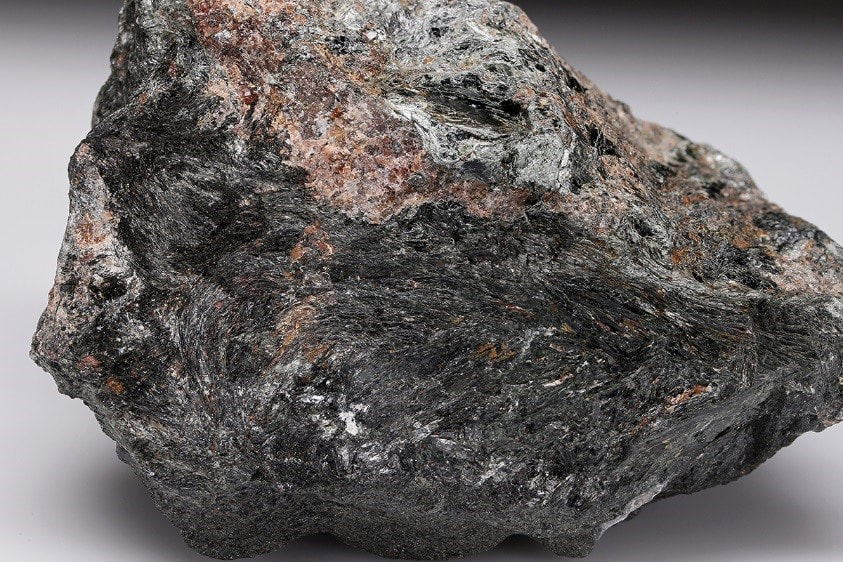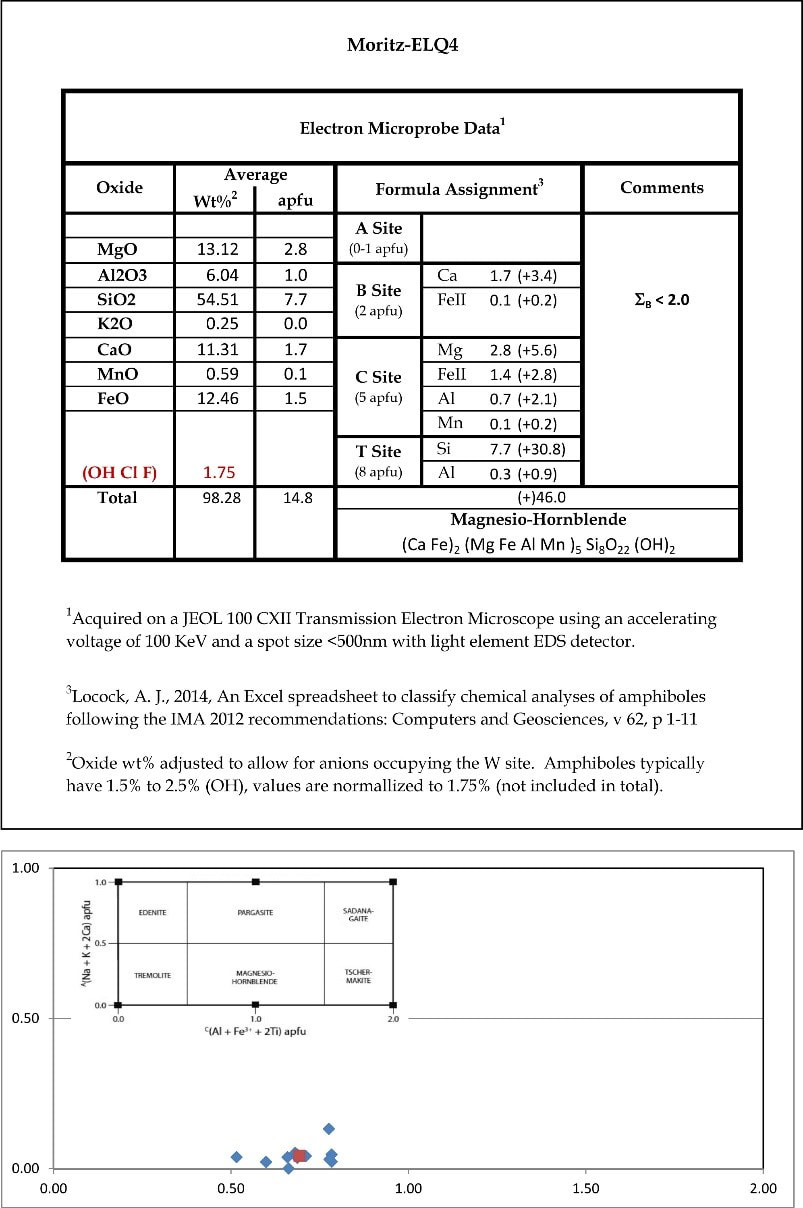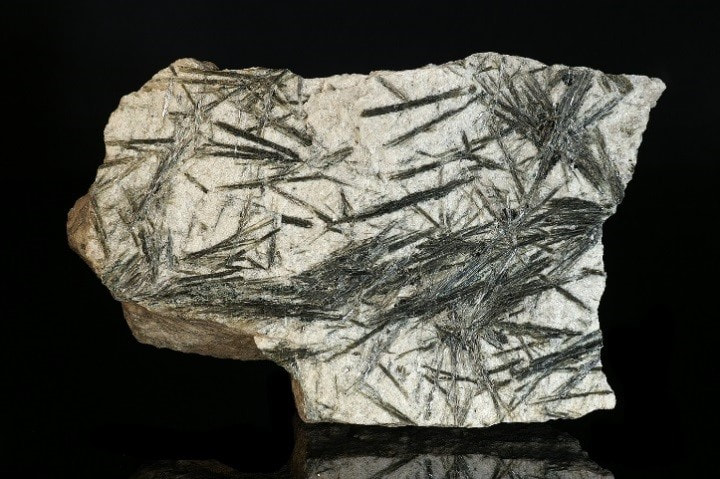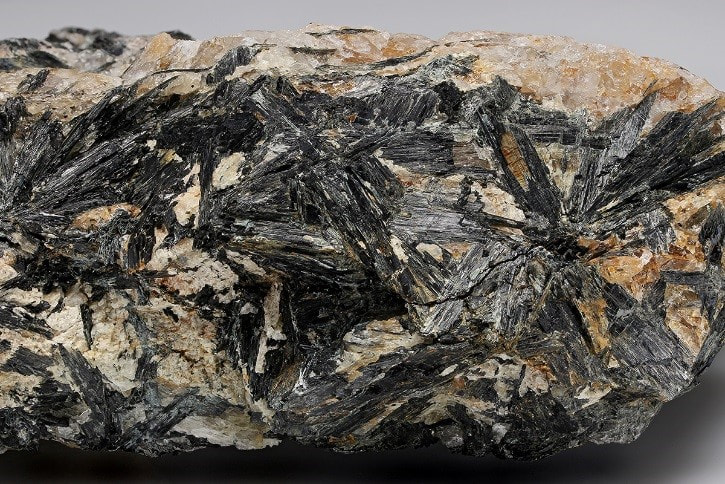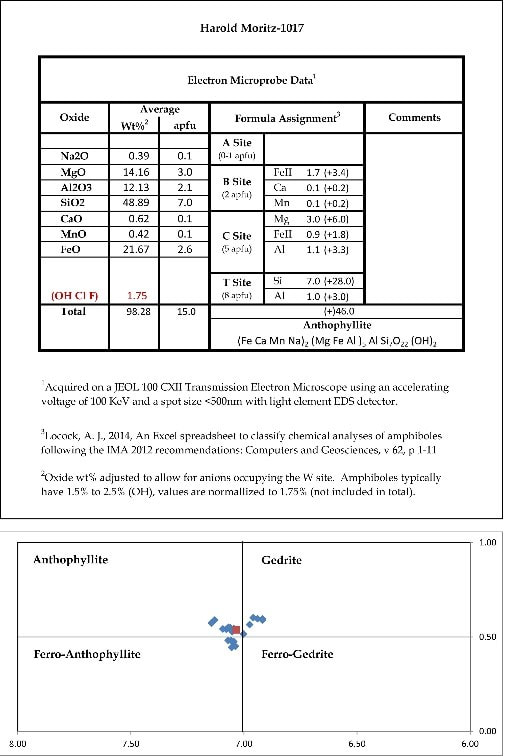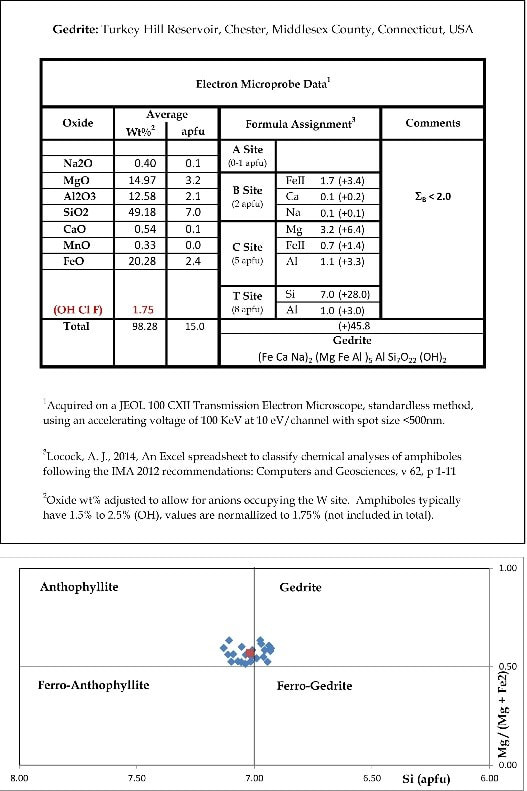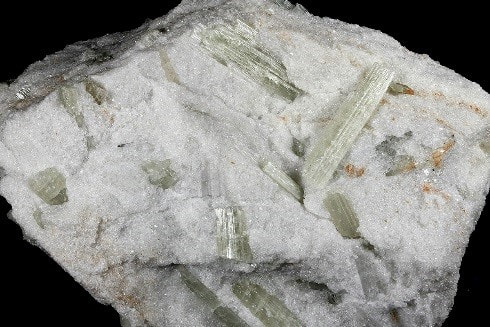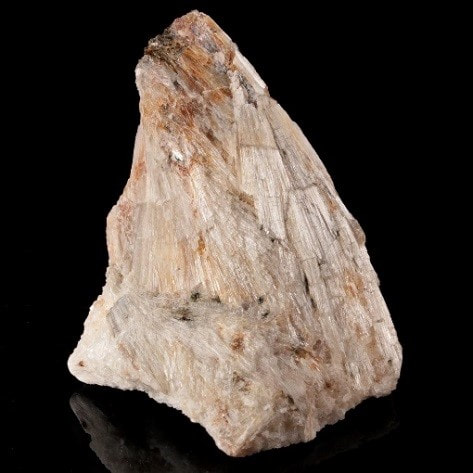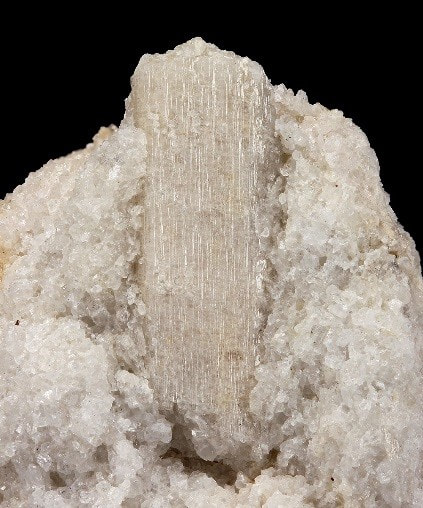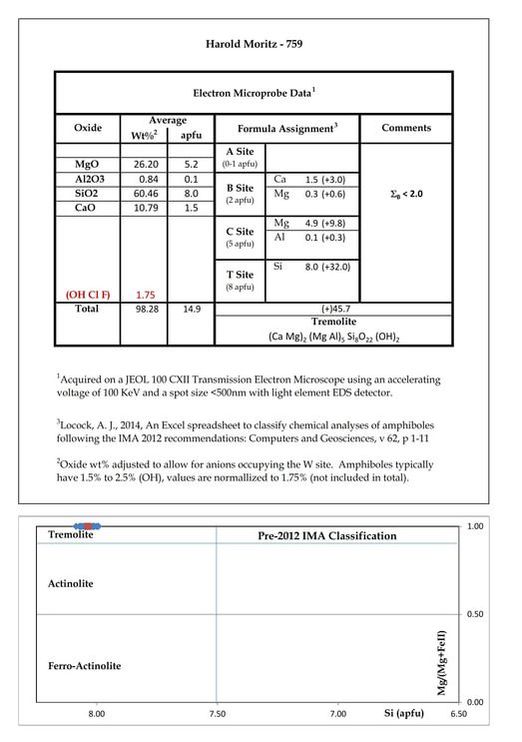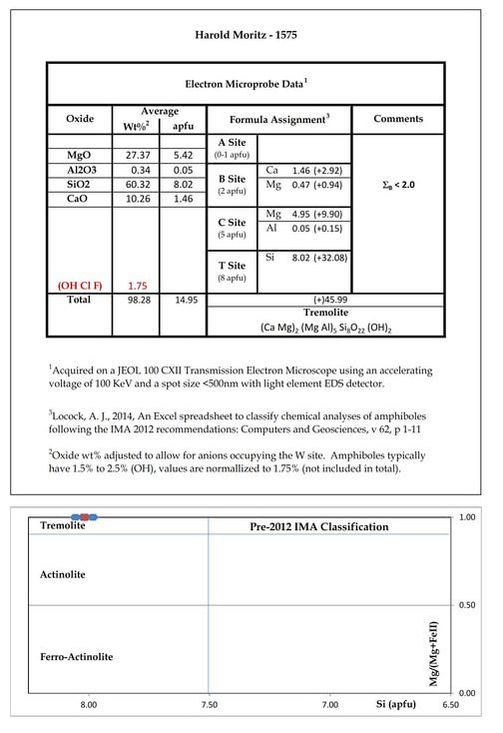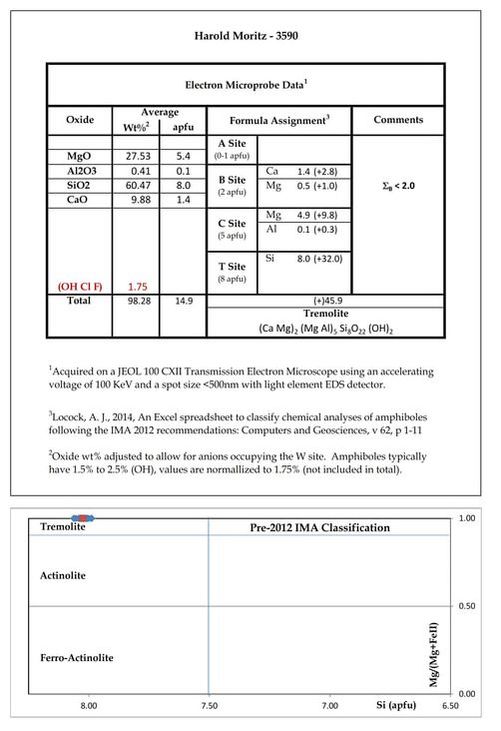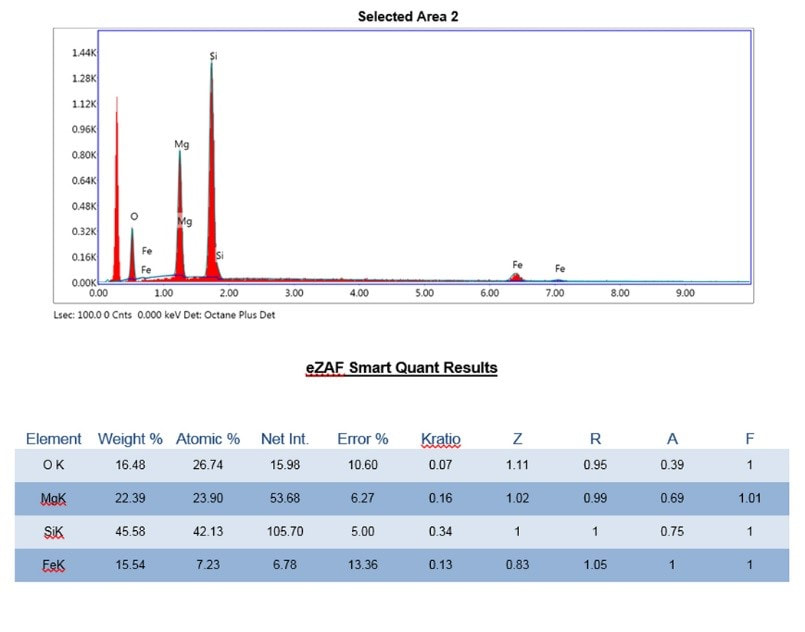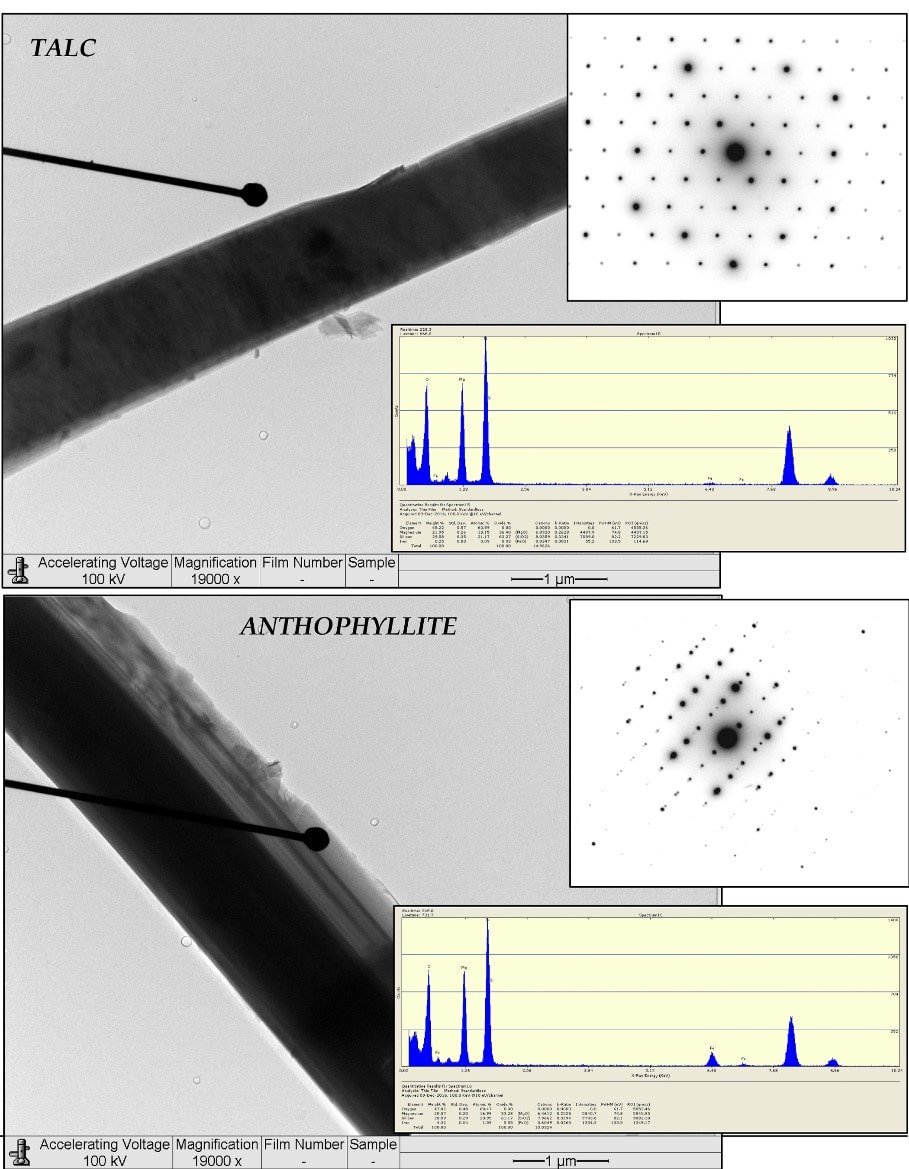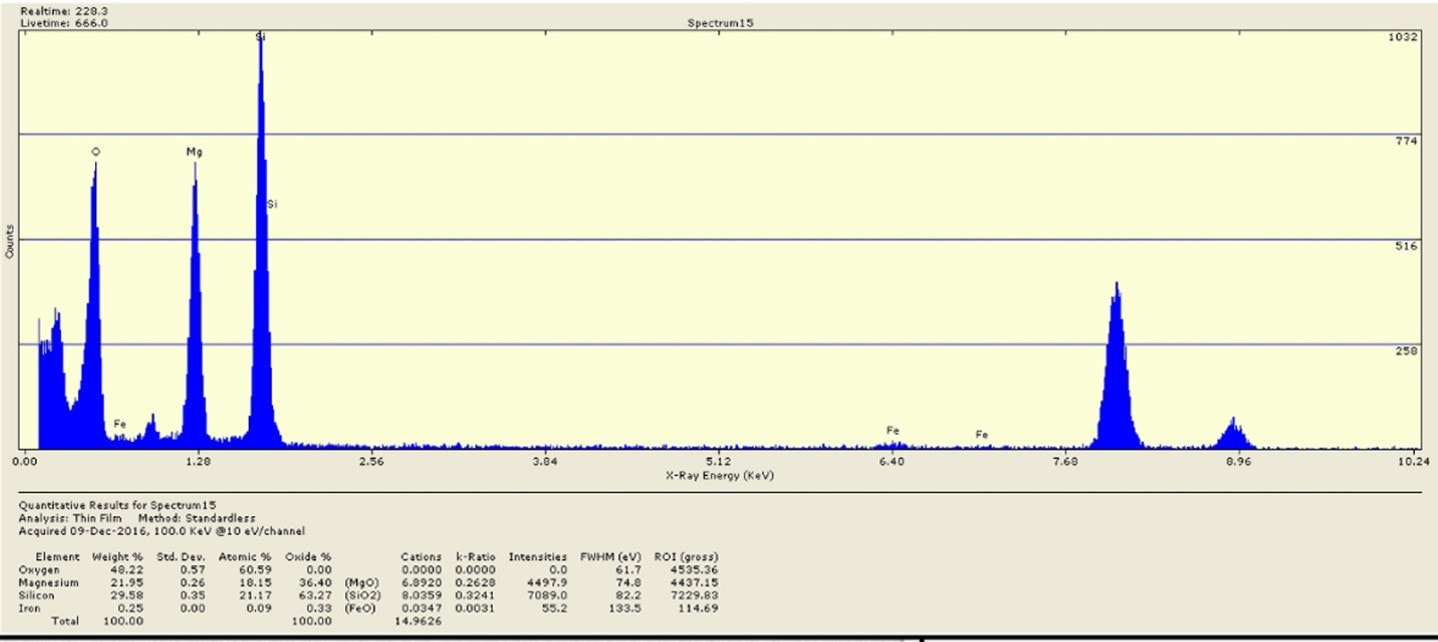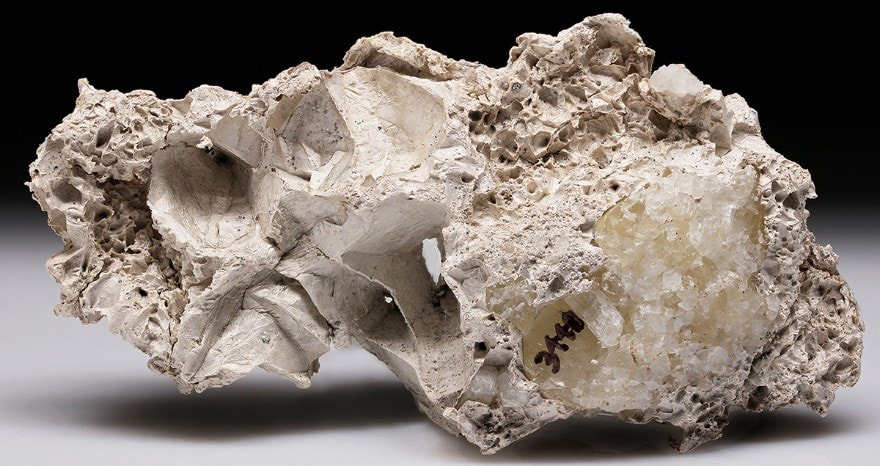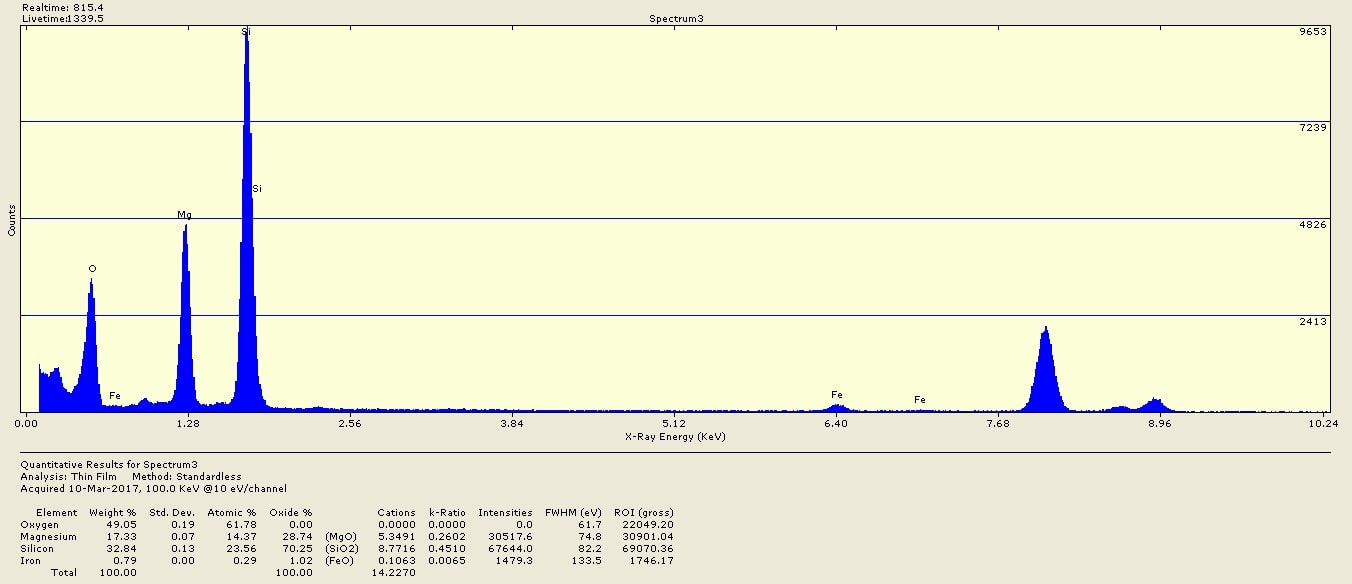| |
the highlands of Connecticut. Most of their specific characterization has been documented via
optical microscopy using thin-sections and published in bedrock geological quadrangle reports
since the 1950s. In less common instances, they can be found as large, distinct and collectible
crystals begging for detailed characterization. To date, most local amphiboles are identified as
tremolite (white to colorless), actinolite (green), hornblende (very dark green to black), or
anthophyllite (brown to green-brown in the Middletown Formation). The International
Mineralogical Association’s (IMA) many changes in nomenclature post-date most of the
literature about them in this state and so many more recognized species potentially exist based on
IMA’s subdivisions of earlier ones. To remedy this situation, during August 2016 and March
2017, I submitted samples of Connecticut amphiboles (or suspected ones) to Frank Craig for
TEM-EDS analyses. Frank is preparing an atlas of amphiboles and I am interested in
determining the various species found in Connecticut.
A = ☐, Na, K, Ca, Pb2+
B = Li, Na, Mg, Fe2+, Mn2+, Ca
C = Li, Na, Mg, Fe2+, Mn2+, Zn, Co, Ni, Al, Fe3+, Cr3+, Mn3+, V3+, Ti, Zr
T = Si, Al, Ti
O = oxygen
W = O, OH, F, Cl
Individual members can often only be completely identified by a combination of chemical-analytical, X-ray diffraction and spectroscopic methods. However, TEM-EDS is a very powerful method that can by itself provide a wealth of chemical information to differentiate species, especially involving the A, B, C and T sites. In the list of elements above, the TEM-EDS method can cannot detect Li and H, so full characterization of the W site’s constituents is lacking and species cannot be split at that level. Li-containing amphiboles are rare and not expected in Connecticut. Nearly all amphiboles are monoclinic, so X-ray diffraction is rarely necessary so long as the samples are correctly visually identified as amphiboles, except in the case of differentiating the paramorphs anthophyllite (orthorhombic) from cummingtonite (monoclinic). But where that ambiguity exists, selected area electron dispersion (SAED) can be used.
Below is a table of the samples, their suspected identification, the method used, and the results, followed by a discussion of each sample. The spectra were acquired by Frank Craig on a JEOL 100 CXII transmission electron microscope using an accelerating voltage of 100 KeV and a spot size <500 nm with light element EDS detector. Data reduction used Locock, A. J. (2014), An Excel spreadsheet to classify chemical analyses of amphiboles following the IMA 2012 recommendations. Computers and Geosciences: 62: 1-11. The oxide weight percent was adjusted to allow for anions occupying the W site. Amphiboles typically have 1.5% to 2.5% (OH), values are normalized to 1.75% (not included in total). Much of the resulting data have been included in the upcoming second edition of Frank Craig’s Asbestos Characterization, TEM Atlas of Regulated and Select Interference Minerals.
| Sample 301: A flabellate aggregate of “hornblende” crystals from the Town Farm Road area of northeast Litchfield, this fairly aesthetic specimen (12 x 10 x 5 cm) was in the John Schroder collection, I purchased it at the Connecticut Museum of Mining and Minerals in Kent. Similar crystallization occurs on Toll Gate Hill just south of US Route 202. Bedrock geology mapping shows interlayered amphibolites, amphibole gneiss, and schist underlying this area of the Cambro-Ordovician Rowe Formation. TEM-EDS analysis indicates it is magnesio-hornblende. |
| Sample ELQ-02: A sample of some dark greenish-black “hornblende” crystals from an unspecified locality in Redding, the specimen belongs to collector Eric L. Quinter, which he purchased some years ago. Photograph (FOV 5 cm) shows striated, flattened, elongated prisms, with golden chalcopyrite in quartz and calcite matrix (also with scapolite not visible). Apparently from a calc-silicate assemblage. In keeping with this paragenesis, the TEM-EDS results indicate it is actually actinolite. |
| Sample ELQ-04: A sample of acicular, dark greenish-black “actinolite” crystals with orange grossular and traces of massive red rutile. from a calc-silicate assemblage in the Collins Hill Formation adjacent to the Strickland pegmatite. The specimen belongs to collector Eric L. Quinter, which he purchased some years ago. This is identical to unanalyzed material described by Richard Schooner, who gave it the |
| Sample 2180: In the 2000s, I collected a large amount of this aesthetic material (photographed one is 22 x 14 x 7 cm) from the DOT rock dump near the state Route 9 exit 8, Haddam before the state sold it off and residences were built on it. I was never really sure if it was gedrite or the reportedly more common anthophyllite because the geological report from 1979 does not include photographs |
Sample 3590 is from a typical splintery radiating crystal aggregate (8.5 x 5.5 x 5.5 cm) from Pfizer Quarry, Canaan village, North Canaan. This is also a very common tremolite habit in the marble belt, most of it occurs this way.
As expected, the TEM-EDS results confirmed the tremolite identification for all 3 samples.
| Sample 1015: These masses of very soft, fibrous, radiating, stellate material (FOV 33 mm) from a small quarry in New Hartford can be found in many collections. While preparing the text for the mindat.org page on it that I updated, I found that it has been called many minerals on labels and in various publications over the decades without any analytical data: |
Pyrophyllite: Al2Si4O10(OH)2
Talc: Mg3Si4O10(OH)2
Anthophyllite: {Mg2}{Mg5}(Si8O22)(OH)2
This ambiguity needed to be clarified. It seemed to me the whole package of visual and physical properties are most like the pyrophyllite deposits in North Carolina and Graves Mountain, Georgia.

